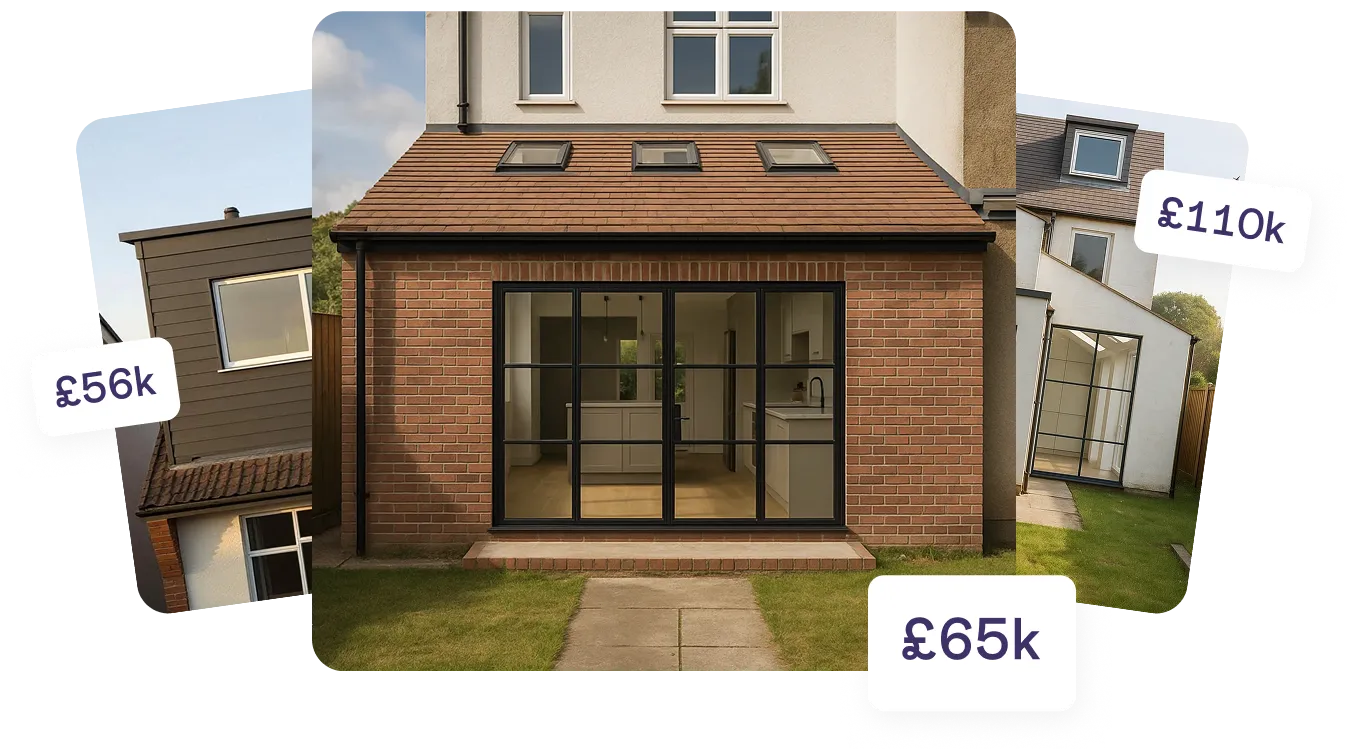Instead, your money will go towards…
- Floor reinforcement
- Insulation
- Doors and windows
- Drainage
- Electrics
- Plumbing and heating
- Internal carpentry
- Plastering
- Decoration
- Tiling
- Flooring
This list might look extensive but don’t forget, you’ll be covering these costs and more, should you go with building from the ground up. Other structures you might convert are: barns, garden rooms, and other disused outbuildings.
Learn more about garage conversions here.
Lay the groundwork sooner, rather than late
Have nothing to convert? Perhaps that doesn’t always have to be the case. If you have no need for a granny flat now but suspect you’ll need one in the future, why not give yourself a head start?
Annexes are kind of a strange one when it comes to planning. If you plan to use one for recreational purposes, such as yoga or as office space, they can be created under your permitted development rights. However, if you plan on having a bedroom in the annexe, then a full planning application is required.
So, in order to change a recreational annexe to a residential one, you need a full planning application? Nope!
In this scenario, you would instead need to apply for a change in use class. This might not always be permitted, so there is risk involved, but it does tend to be a more reliable way of securing your future granny flat.
Learn more about annexes and planning here.
What’s more, by building a recreational space now, you break up the costs of your project over several years. A yoga room or office space won’t need the same level of plumbing or insulation as their residential counterpart, so you can put off these costs until the time is right.
Pay off the investment before the big move
Another option, if you have some years to spare, is to have your annexe pay for itself.
One way you might go about this is to create your residential annexe and then offer it out as a rented space in the interim, such as on airbnb or other short-term letting service.
Of course, there are a few factors that will affect how easy this will be. Before you go launch your airbnb career, consider these questions…
- Do you live in area with plenty of tourism?
- Do you have time to manage the rental admin?
- Do you have time to clean up after guests?
- Will your annexe have its own entrance?
- Would your family be comfortable having guests?
If admin and cleaning seem like too much trouble, there are services who can manage this on your behalf. However, this will eat away at your profit, and it’ll take you much longer to make a return on your investment.

Building up, not out
If a traditional annexe isn’t within your budget, why not think out (and above) the box?
After all, you don’t necessarily need to build an annexe to create a private space. Loft conversions and rear extensions both create new space which can be turned into private accommodation. What’s more, both of them come under your permitted development rights, so can be easier to get through the planning stage.
Compare the price of loft conversions vs extensions.
It’s now even possible to add two-storey extensions and even place a new storey onto your property, thanks to the permitted development changes which came into effect in 2020. Though these projects might not be cheaper than a traditional annexe, they do offer a great alternative, should you be hesitant to lose garden space or you want your family all under one roof.
Learn more about the 2020 permitted development changes.
Use a specialist property broker
When it comes to getting the most out of your funds, we always recommend you do your research about what finance options are available. Not sure what loan or funding route is right for your home? Try speaking to a specialist broker who specialises in property investment.
Unlike high-street lenders, these brokers will often be able to factor in not just the current value or your home, but also its worth after the project is completed. This means they can find the right finance options which cover you in the short term and long term, potentially saving you thousands down the line.
Curious how much you could borrow? Explore our free finance calculator.
Conclusion
It’s possible to save money on your annexe by making smart decisions before the build even takes place. Annexes are flexible spaces which don’t need to be purely residential and this alone can make them a worthwhile investment.
If you want to get the most out of your project, remember to…
- Consider converting existing space
- Explore rental opportunities
- Look into spreading the costs by using it recreationally now
- Don’t forget their are alternative projects which don’t require a full planning application
- Be smart with your finances and consult a specialist lender
To learn more about how you might create a budget-friendly granny flat, book a free consultation with our team.





